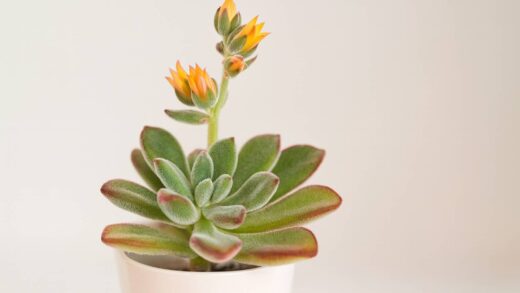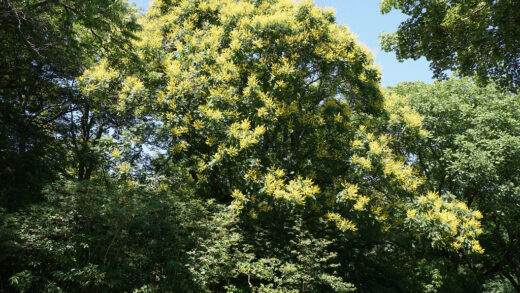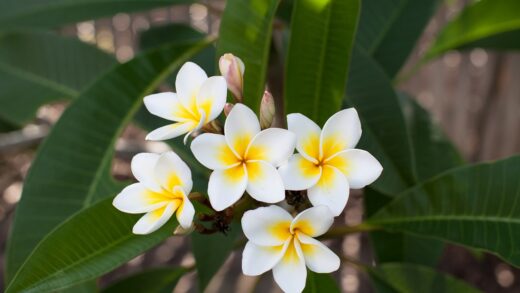Providing the Atlas cedar with the appropriate nutrients is a key component of its long-term care, ensuring vigorous growth, rich needle color, and strong resistance to pests and diseases. While these hardy trees are not considered heavy feeders and can adapt to a variety of soil conditions, they perform best when their nutritional needs are met. Understanding what to feed your cedar, when to feed it, and how to apply fertilizer correctly can make the difference between a tree that simply survives and one that truly thrives, becoming a spectacular centerpiece in the landscape. A well-nourished tree is a healthy tree, better equipped to handle environmental stresses and live a long, productive life.
Before embarking on any fertilization program, the most responsible first step is to conduct a professional soil test. This analysis provides a detailed report on the existing nutrient levels and the pH of your soil, taking the guesswork out of fertilization. An Atlas cedar planted in nutrient-rich soil may not require any supplemental fertilizer for many years, and adding unnecessary nutrients can be wasteful and even harmful to the tree and the surrounding environment. The soil test will tell you precisely which nutrients, if any, are deficient and will allow you to choose a fertilizer product that targets those specific needs.
In the absence of a soil test, a general guideline is to use a balanced, slow-release granular fertilizer formulated for evergreen trees and shrubs. These products typically have an N-P-K (Nitrogen-Phosphorus-Potassium) ratio that is suitable for conifers, often with slightly higher nitrogen content to promote healthy foliage growth. Slow-release formulations are highly recommended because they break down gradually over several months, providing a steady supply of nutrients rather than a single, intense dose that can burn the tree’s roots and stimulate weak, excessive growth.
The timing of fertilizer application is crucial for it to be effective. The best time to fertilize an Atlas cedar is in the early spring, just as new growth begins to emerge. This provides the tree with the necessary resources to support its annual growth flush. A second, lighter application can be made in mid-summer if the tree shows signs of deficiency, but you should avoid fertilizing late in the growing season. Late-season fertilization can encourage a flush of tender new growth that will not have time to harden off before the first frost, making it highly susceptible to winter damage.
When applying granular fertilizer, it is important to do so correctly to ensure the nutrients reach the root system and to avoid damaging the tree. The fertilizer should be broadcast evenly over the entire root zone, which extends from the trunk out to the drip line (the outermost edge of the branches) and slightly beyond. It should never be concentrated in a single ring at the base of the trunk, as this can severely burn the bark and the roots in that area. After application, gently rake the granules into the top layer of soil or mulch and water the area thoroughly to help activate the fertilizer and move the nutrients down into the root zone.
More articles on this topic
Understanding essential nutrients
The health of an Atlas cedar is dependent on a range of essential nutrients, which are categorized as macronutrients and micronutrients based on the quantities required by the tree. The primary macronutrients, represented by the N-P-K ratio on fertilizer bags, are Nitrogen (N), Phosphorus (P), and Potassium (K). Nitrogen is arguably the most critical for a cedar, as it is a major component of chlorophyll and is essential for vigorous foliage growth and the deep, rich color of its needles. A nitrogen deficiency often presents as overall yellowing of the needles, particularly the older ones.
Phosphorus (P) plays a vital role in root development, energy transfer, and the overall structural integrity of the tree. It is particularly important for young trees during their establishment phase, as a strong root system is the foundation for all future growth. While phosphorus deficiencies are less common, they can result in stunted growth and a purplish discoloration of the needles. A soil test is the best way to determine if supplemental phosphorus is needed, as excessive amounts can be detrimental to soil health.
Potassium (K), the third primary macronutrient, is essential for the tree’s overall hardiness and resilience. It helps regulate water movement within the tree, strengthens cell walls, and plays a crucial role in activating enzymes involved in disease resistance and stress tolerance. A tree with adequate potassium levels is better able to withstand drought, temperature extremes, and attacks from pests and diseases. Symptoms of potassium deficiency can include browning or scorching along the margins of the needles.
In addition to the “big three,” Atlas cedars also require a host of micronutrients, albeit in much smaller quantities. These include elements such as magnesium, sulfur, iron, manganese, and zinc. While needed in trace amounts, a deficiency in any one of these can cause significant health problems, most commonly chlorosis (yellowing needles) as they are essential for chlorophyll production and other metabolic functions. A good quality, complete fertilizer for evergreens will typically contain a balanced spectrum of these necessary micronutrients.
More articles on this topic
Organic vs. synthetic fertilizers
When choosing a fertilizer for your Atlas cedar, you have the option between organic and synthetic products, each with its own set of advantages and disadvantages. Organic fertilizers are derived from natural sources, such as compost, well-rotted manure, bone meal, or fish emulsion. Their primary benefit is that they improve the overall health and structure of the soil. They release their nutrients slowly as microorganisms in the soil break them down, which reduces the risk of root burn and provides a steady, long-lasting source of food for the tree.
Using organic materials like compost not only feeds the plant but also enhances the soil’s ecosystem. It increases the population of beneficial microbes, improves soil aeration and water retention, and helps to buffer the soil pH. Spreading a one- to two-inch layer of high-quality compost over the tree’s root zone each spring is one of the best and most sustainable ways to provide a wide range of essential macro- and micronutrients. This holistic approach builds a healthy soil foundation that supports the tree for the long term.
Synthetic fertilizers, on the other hand, are manufactured chemical products that offer a more precise and concentrated dose of specific nutrients. They are typically faster-acting than organic options, which can be beneficial if the tree is showing clear signs of a severe nutrient deficiency that needs to be corrected quickly. They are also often more convenient to purchase and apply, with formulations specifically balanced for evergreen trees readily available at garden centers.
However, synthetic fertilizers do have potential downsides. They do little to nothing to improve the long-term health and structure of the soil. Their concentrated nature means there is a higher risk of over-application, which can burn the tree’s roots and potentially leach into groundwater systems. Their fast-releasing nature can also sometimes lead to a flush of weak, leggy growth that is more susceptible to pests. A balanced approach, perhaps using a base of organic compost supplemented with a targeted synthetic fertilizer only when a soil test indicates a specific need, can often provide the best of both worlds.
Signs of nutrient deficiency
Recognizing the visual cues of a nutrient deficiency is a key diagnostic skill for maintaining a healthy Atlas cedar. The most common symptom is chlorosis, which is a general yellowing of the needles. If the yellowing appears primarily on the older, inner needles while the new growth remains green, it often points to a deficiency in a mobile nutrient like nitrogen. Nitrogen can be moved by the plant from older tissues to support new growth, so the older parts show the deficiency first.
If the chlorosis is more pronounced on the new, young growth at the tips of the branches, it may indicate a deficiency in an immobile micronutrient, such as iron or manganese. These elements cannot be easily relocated within the plant, so when the tree is deficient, the new growth is unable to acquire what it needs, resulting in pale or yellow needles. Iron chlorosis is particularly common in soils with a high pH (alkaline), as the high pH makes the iron present in the soil unavailable for the tree to absorb.
Beyond simple yellowing, other signs can point to specific issues. For example, stunted growth, where the annual flush of new shoots is significantly shorter than in previous years, can be a general indicator of poor nutrition or a phosphorus deficiency. Needle tips and margins turning brown or appearing scorched can suggest a lack of potassium. While these visual cues are helpful, they are not definitive, as symptoms can overlap and can also be caused by other stressors like disease or improper watering.
When you observe potential signs of a nutrient deficiency, it is crucial not to act rashly by applying large amounts of a random fertilizer. The wrong fertilizer can make the problem worse or create a new imbalance. The best course of action is to use these visual signs as a prompt to conduct a soil test. This scientific approach will confirm the specific deficiency and allow you to implement a targeted fertilization strategy that addresses the root cause of the problem effectively and safely.
A step-by-step guide to application
Applying fertilizer to your Atlas cedar correctly is just as important as choosing the right product. The first step is to accurately determine the area of the root zone that needs to be covered. This area is generally considered to be a circle that extends from about a foot away from the trunk out to the drip line of the branches. For very large, mature trees, this can be a substantial area. Calculating the square footage of this zone will help you determine the correct amount of fertilizer to use according to the product’s instructions.
Once you have calculated the area, you can measure out the appropriate amount of granular fertilizer. Always follow the application rates recommended on the product packaging; never assume that more is better. Over-fertilizing is a common mistake that can lead to chemical burn of the roots, damaging or even killing the tree. It is better to apply slightly less than the recommended amount than to apply too much. Use a handheld or push spreader for large areas to ensure an even distribution of the granules.
With the fertilizer measured, broadcast it as evenly as possible over the entire root zone. Take care to avoid getting the granules on the tree’s foliage, and ensure that none of it is concentrated directly against the trunk. The goal is to distribute the food source throughout the area where the tree’s feeder roots are most active, which is typically in the top 6 to 12 inches of soil in the region below the canopy. For trees located in a lawn, be mindful of the type of fertilizer used, as some evergreen formulations can be too high in nitrogen for the surrounding grass.
The final and most critical step is to water the fertilizer in thoroughly. Immediately after application, use a hose or sprinkler to water the entire root zone deeply. This watering accomplishes two things: it washes any stray granules off the foliage, and more importantly, it begins to dissolve the fertilizer, carrying the nutrients down through the soil to where the roots can absorb them. Without this final watering, the fertilizer will simply sit on the surface and will not be effective.


















